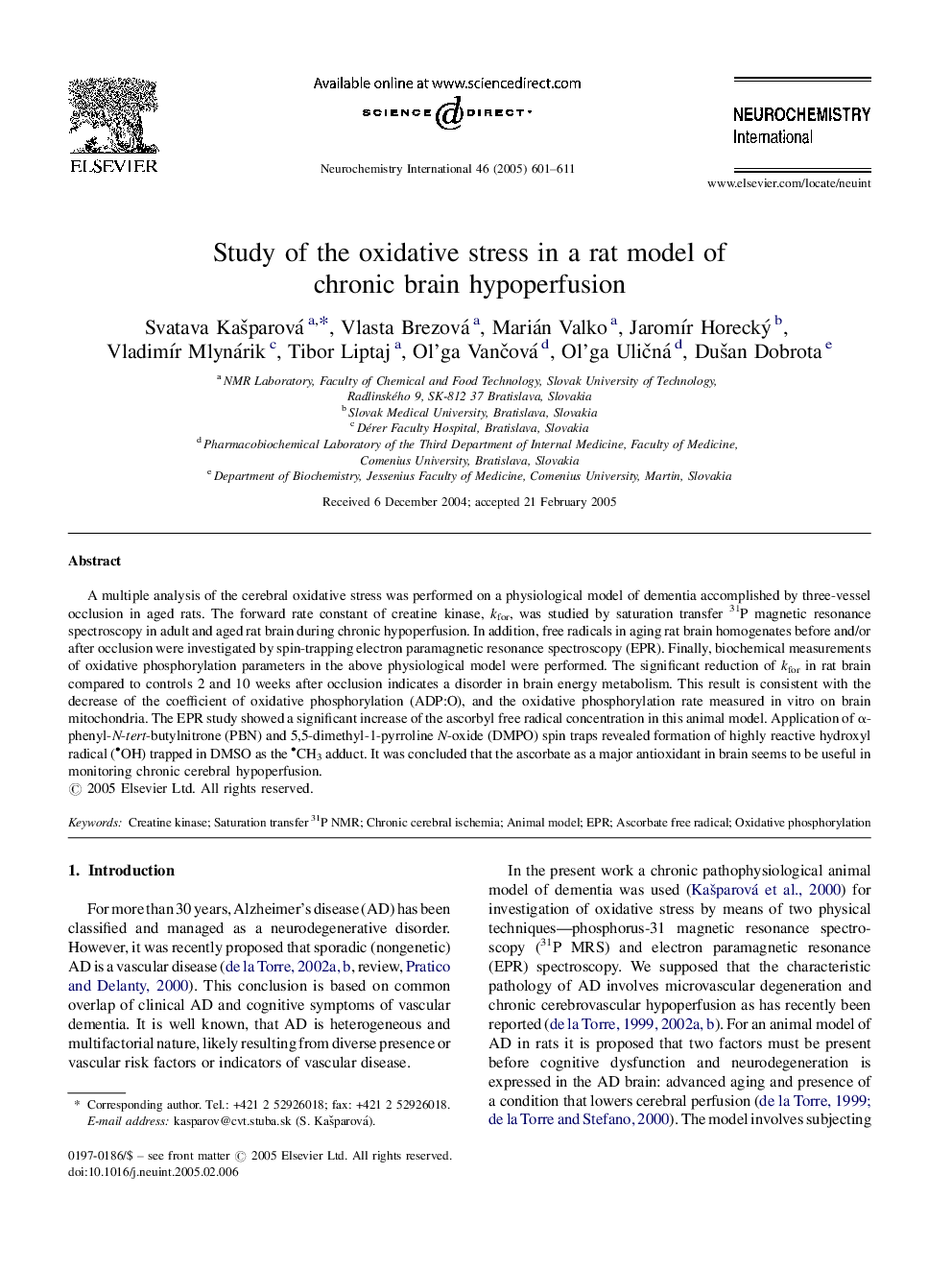| Article ID | Journal | Published Year | Pages | File Type |
|---|---|---|---|---|
| 10958768 | Neurochemistry International | 2005 | 11 Pages |
Abstract
A multiple analysis of the cerebral oxidative stress was performed on a physiological model of dementia accomplished by three-vessel occlusion in aged rats. The forward rate constant of creatine kinase, kfor, was studied by saturation transfer 31P magnetic resonance spectroscopy in adult and aged rat brain during chronic hypoperfusion. In addition, free radicals in aging rat brain homogenates before and/or after occlusion were investigated by spin-trapping electron paramagnetic resonance spectroscopy (EPR). Finally, biochemical measurements of oxidative phosphorylation parameters in the above physiological model were performed. The significant reduction of kfor in rat brain compared to controls 2 and 10 weeks after occlusion indicates a disorder in brain energy metabolism. This result is consistent with the decrease of the coefficient of oxidative phosphorylation (ADP:O), and the oxidative phosphorylation rate measured in vitro on brain mitochondria. The EPR study showed a significant increase of the ascorbyl free radical concentration in this animal model. Application of α-phenyl-N-tert-butylnitrone (PBN) and 5,5-dimethyl-1-pyrroline N-oxide (DMPO) spin traps revealed formation of highly reactive hydroxyl radical (OH) trapped in DMSO as the CH3 adduct. It was concluded that the ascorbate as a major antioxidant in brain seems to be useful in monitoring chronic cerebral hypoperfusion.
Keywords
Related Topics
Life Sciences
Biochemistry, Genetics and Molecular Biology
Cell Biology
Authors
Svatava KaÅ¡parová, Vlasta Brezová, Marián Valko, JaromÃr Horecký, VladimÃr Mlynárik, Tibor Liptaj, Ol'ga VanÄová, Ol'ga UliÄná, DuÅ¡an Dobrota,
